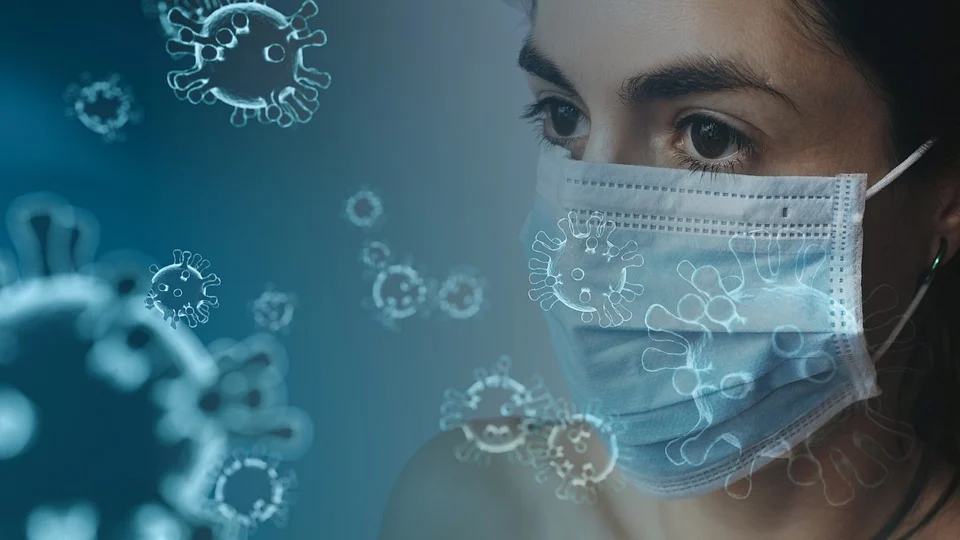The most prevalent symptoms, considered classic indicators, according to medical recommendations, are fever, cough, and sore throat. The absence of taste and smell, which occurs in more than 60% of cases, is another symptom that you have been infected with a new coronavirus.
Now, in the majority of instances, COVID-19 begins as a respiratory illness, with symptoms similar to the flu or an allergy.
The most common type of fever identified in COVID-19 individuals is low-grade and can buy lateral flow test to identify at home, persistent fever (between 99 degrees Fahrenheit- and 102 degrees Fahrenheit). A dry cough, that is, a cough that does not produce phlegm, is the most common type of cough. A cold, congested nose is an unusual sign of COVID-19. A sore throat, a prickly voice, irritability, and harshness are all symptoms.
The other hidden symptoms of Covid are:
- Coughing due to fever or chills
- Breathing difficulties or shortness of breath
- Fatigue
- Muscle or joint aches
- Headache
- New aversion to taste or scent
- Throat discomfort
- Runny nose or congestion
- Vomiting or nausea
- Diarrhea
- Breathing difficulties
- Chest discomfort or pressure that persists
- new perplexity
- Lips or face that is flushed
- Swollen eyes with pinkeye
- Fainting
- Guillain-Barré syndrome
- spitting up blood
- Clots in the blood
- Seizures
- Heart issues
- Kidney disease
- Problems or injury to the liver
How do identify Covid Symptoms?
According to the CDC, the most common symptoms of COVID-19 in children are fever and cough, but they may also develop chills, runny nose or runny nose, loss of taste or smell, sore throat, breathlessness or difficulty breathing, diarrhea, nausea or vomiting, stomach, tiredness, migraine, muscular or body aches, poor appetite or poor feeding.
According to the CDC, parents should “pay special attention” to indicators that can indicate COVID-19 in their children, such as a sickness of 100.4 degrees F (38 degrees Celsius) or greater, sore throat, a new uncontained cough that causes difficulty breathing, diarrhea, vomiting, or stomach ache, and a new onset of severe headache, especially if it is accompanied by a fever. If the youngster exhibits any.
What Should You Do If You Believe You Have Mild Symptoms?
If you experience milder symptoms such as a fever, chest tightness, or coughing, call your doctor. Stay at reception unless you need medical attention. If you do have to go in, seek advice from your doctor or hospital beforehand.
Consult your physician about your condition: They may have further instructions if you are at high risk of problems due to your age or even other health concerns.
Separate yourselves: This entails avoiding other people in any way, including members of your own family. Keep during a selected “sick room,” and if possible, use a separate restroom. If you must be with other people, use a face mask. This includes those with whom you reside. If a mask is worn.
When Should You Get Tested for COVID-19?
Testing for COVID is the very first step. Get checked yourself for COVID-19 if you have:
- You’ve experienced viral symptoms.
- You’ve come into touch with somebody who has COVID-19 (take a test at least 5 days after you last saw the individual)
- You are not up to date on your COVID-19 immunizations and are being screened for the virus in a larger population.
- Your school, health care provider, business, state, the municipal, tribal, or territorial health department has requested that you get tested (regardless of your vaccination status)
How to Safeguard Yourself from COVID-19?
Several COVID-19 vaccinations are available, and unless your doctor recommends otherwise, they are the best method to protect yourself and others around you. Full immunization reduces your risk of contracting COVID-19 by 91%.
In the United States, the following vaccinations are the most widely available:
Pfizer: Accessible for children and adults over the age of 5, the primary series consists of two doses spaced three weeks apart; teenagers aged 12-17, as well as everyone aged 18 and above, should have a booster dose. 5 months following the final dosage in their initial series Moderna: for those above the age of 18, the primary series consists of two monthly doses; everyone over the age of 18 should have a booster dose. 5 months following the final dosage in their initial series.
Moderna: accessible for those over the age of 18, the primary series consists of two monthly doses; everyone over the age of 18 should obtain a booster dosage 5 months following the remaining dose of their number one series.
Johnson & Johnson: accessible for those over the age of 18, take one dosage; everyone over the age of 18 should have a booster dose of either Pfizer or Moderna at least two months following the first dose of Johnson & Johnson.
